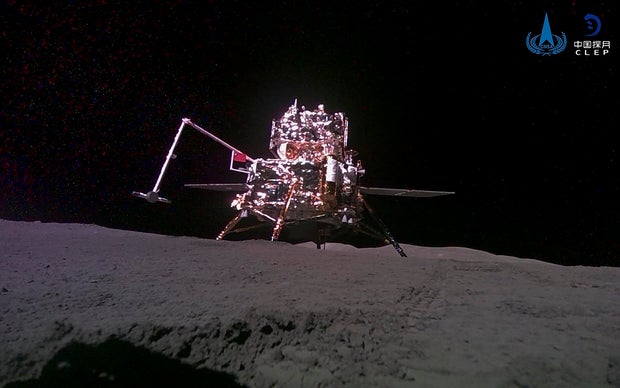Space race heats up
Volcanoes were erupting on the mysterious far side of the moon billions of years ago just like on the side that we can see, new research confirms.
Researchers analyzed lunar soil brought back by China's Chang'e-6, the first spacecraft to return with a haul of rocks and dirt from the little-explored far side.
Two separate teams found fragments of volcanic rock that were about 2.8 billion years old. One piece was even more ancient, dating back to 4.2 billion years.
"To obtain a sample from this area is really important because it's an area that otherwise we have no data for," said Christopher Hamilton, a planetary volcano expert at the University of Arizona who was not involved with the research.
Scientists know there were active volcanoes on the near side, the part of the moon seen from Earth, dating back to a similar time frame. Previous studies, including data from NASA's Lunar Reconnaissance Orbiter, suggested the far side might also have a volcanic past. The first samples from that region facing away from Earth confirm an active history.
 This China National Space Administration (CNSA) handout image released by Xinhua News Agency, shows the lander-ascender combination of Chang'e-6 probe taken by a mini rover after it landed on the moon surface, June 4, 2024.
/ AP
This China National Space Administration (CNSA) handout image released by Xinhua News Agency, shows the lander-ascender combination of Chang'e-6 probe taken by a mini rover after it landed on the moon surface, June 4, 2024.
/ AP
The results were published Friday in the journal Science.
China has launched several spacecraft to the moon. In 2020, the Chang'e-5 spacecraft returned moon rocks from the near side, the first since those collected by NASA's Apollo astronauts and Soviet Union spacecraft in the 1970s. The Chang'e-4 spacecraft became the first to visit the moon's far side in 2019.
The moon's far side is pockmarked by craters and has fewer of the near side's flat, dark plains carved by lava flows. Why the two halves are so different remains a mystery, said study co-author Qiu-Li Li from the Chinese Academy of Sciences.
Li said the new findings reveal over 1 billion years of volcanic eruptions on the lunar far side. Future research will determine how the activity lasted so long.
China's moon program is part of a growing rivalry with the U.S. — still the leader in space exploration — and others, including Japan and India. China launched a three-member crew on its own space station orbiting the Earth, and it aims to put astronauts on the moon by 2030. More Chinese lunar probe missions are planned over the next four years.
NASA plans its first piloted Artemis mission late next year, launching three NASA astronauts and a Canadian flyer on a looping voyage around the moon and back to test the agency's Orion crew transport ship.
William Harwood contributed to this report.
- In:
- Moon










 English (US) ·
English (US) ·